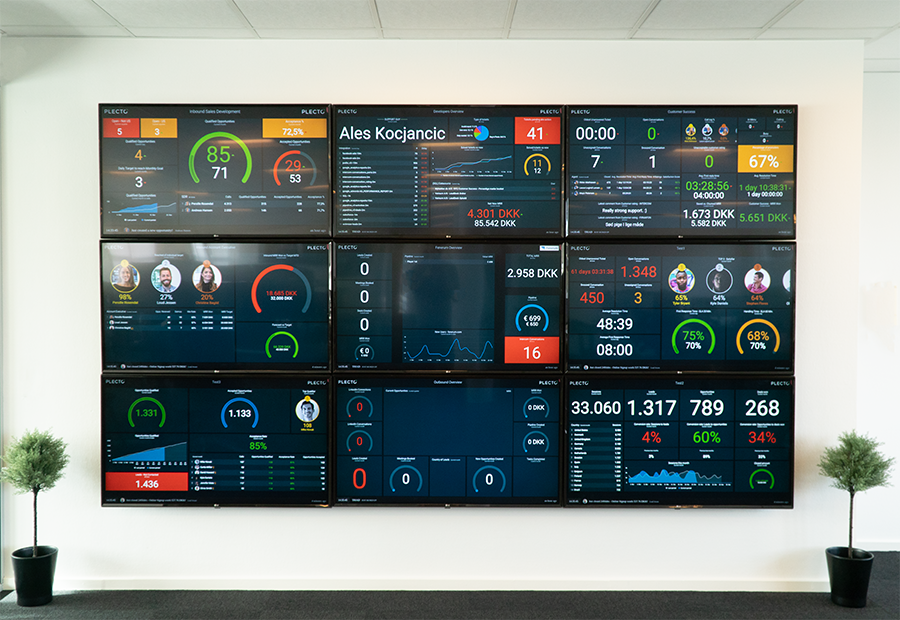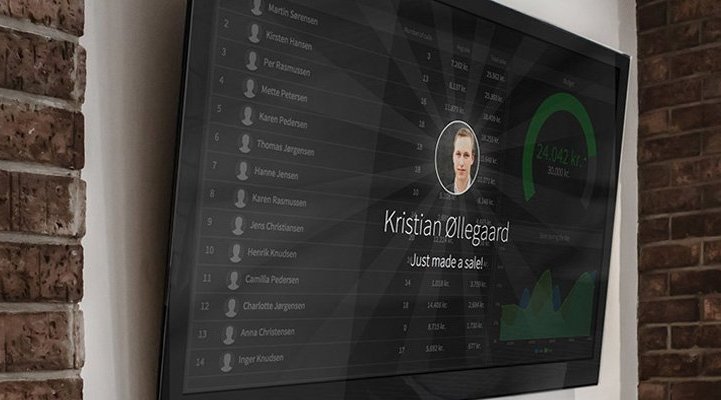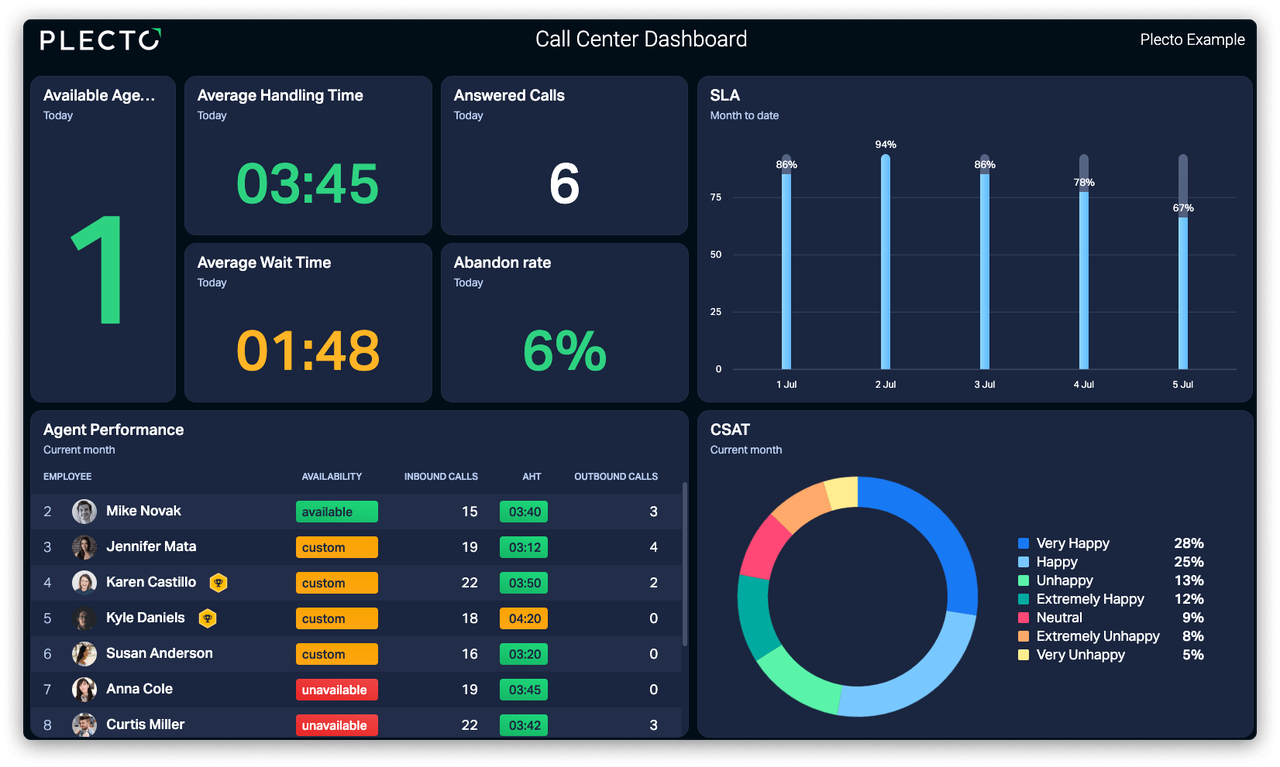We get a lot of questions from customers about office dashboards and what hardware to use for displaying their performance data. We’ve tested most of the options and here I’d like to present the most common ones and our experience with them.
Smart TV
If you want to display your dashboards on TVs, you have two options: Samsung or LG (with webOS). While the Phillips Smart TVs looks like they are a good deal, their browser is very poor which causes bugs on websites, including the Plecto performance dashboards. Let’s take a deeper look:
LG (with webOS)
WebOS which comes with newer LG models has an extremely good browser that shows Plecto just like if it was an ordinary computer. However, it does have one major pain point: It goes into pause screen every 30 or 60 minutes. We’ve tried to call LG to resolve this issue, but for now we haven’t been able to. As soon as this issue can be solved, LG with webOS would be our recommended TV dashboard solution.
Samsung
We tested a number of Samsung TVs and it seems to be very specific to each model whether they work properly with Plecto or not. If you’re looking for a Samsung TV we recommend that you test it in a store with your dashboard software, before actually purchasing it if you want to use the Smart TV function.
Computer + TV
In this setup, you can use just about any TV. The only thing to look out for is the resolution, usually marked with the term “HD Ready”, “Full HD” or “4K”. You should completely avoid “HD Ready” and go for any of the other TV resolution options, where “4K” is the best one to track your KPIs metrics on a dashboard from Plecto.
Dell Optiplex 2030 Micro with Intel i5
One of our good clients recommended this machine. The model with an i5 processor runs the business system super smooth and the best part is that it fits perfectly behind the TV.
Custom devices
The Raspberry PI
The Raspberry PI can fit behind just about any TV and excels in size and features. However, because of lack of good drivers it is not possible to run smooth animations in the browser. Until this is solved, we do not recommend Raspberry PI for our business visualization dashboards.

Build your first dashboard.
Start your 14-day free trial today
How to involve your team in your data?
If you’re considering which hardware to use to display your data in the office, you might also want to know more about how to involve your team in your data-driven culture. For that reason, we’ve put together the 3 steps to promote data-driven conversations among your employees and increase their engagement with the company’s data.
These are the 3 steps to involve your team in your data!
1. Make it easy to work with data
Not all your departments work with data on a daily basis, so they might need some introductions to understand what the data is for, or even what you are measuring in the first place. Give your employees a proper introduction to the dashboards, allow them to ask questions about it, and promote a transparent culture where data is visible for everyone.
Your employees certainly don’t want to spend time deciphering what the data means, which is why the more visual the better! You can choose to display the relevant data for your employees so that they know precisely where to look when they need to see a specific KPI. Moreover, to make it more dynamic to see data, you can use the different widgets that update automatically in real-time. This way, your team can always have the latest overview of the data they are looking at.
2. Bring data into your conversations
One common misconception among employees is that data is not to be mentioned openly. And from Plecto we ask, why not? You are all part of the same company, and you are all adding your efforts towards a common goal. There are many conversations to have along the way!
Especially if you and your team are new to having access to data, it can be uncertain how to incorporate it into the daily routine. However, there are many ways in which you can start a data-driven conversation with your employees. For instance, by bringing the latest data into a department’s meeting, so your employees can see where it is coming from and discuss how to improve it. Another example can be to make it a habit to comment on each other’s progress towards a KPI.
Data is there, why not talk about it then?
3. Data is to be celebrated
Not only commenting on each other’s progress but also celebrating it! You don’t need to wait for the biggest milestone to involve your employees in the company’s success… you can do it daily.
A data-driven culture also entails bringing your employees together to talk about data altogether or, even better, embrace it. Why not celebrate that your salesperson has closed a new deal? Or that your Support team has got the greatest rating?
Your employees want to know what’s going on around the office, and this is a great way of bringing your different departments together.
You can read more about how to get started with a data-driven culture to start engaging your team in their performance!




